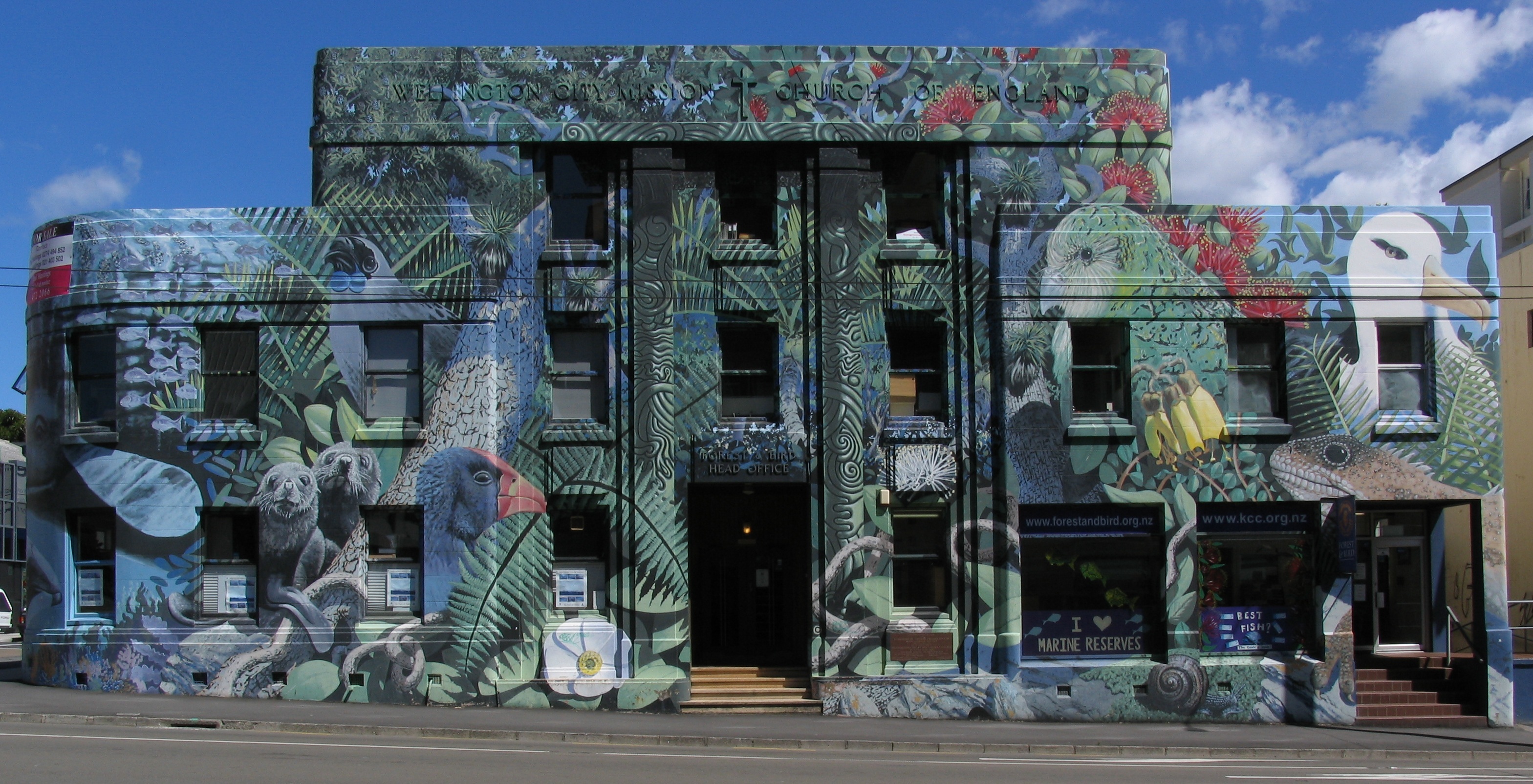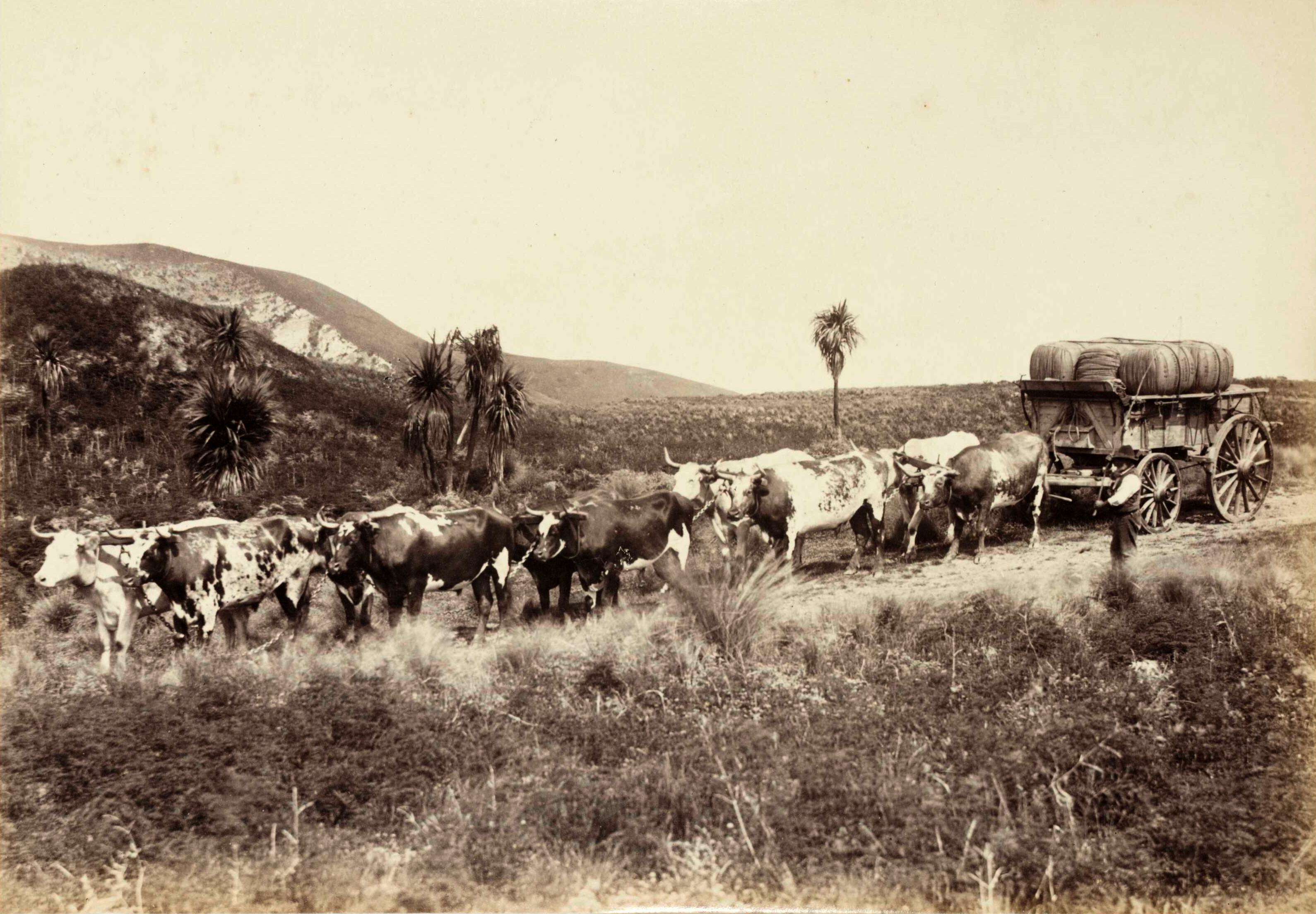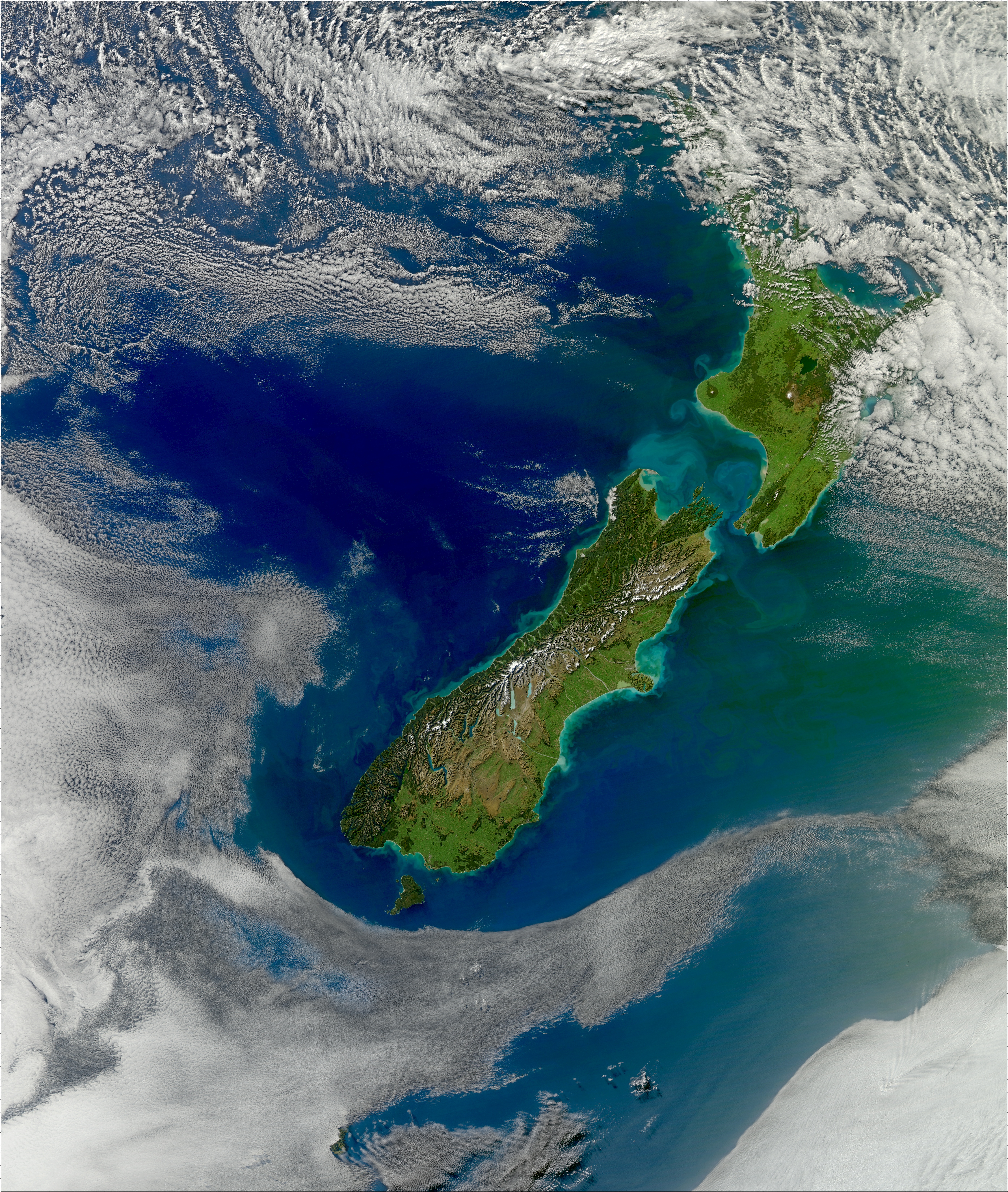|
Dirty Dairying
In New Zealand "dirty dairying" refers to damage to the ecological health of New Zealand's freshwater environment by the intensification of dairy farming, and also to the high profile campaign begun in 2002 by the Fish and Game New Zealand, Fish and Game Council to highlight and combat this. The campaign led to the creation in 2003 of the Dairying and Clean Streams Accord, a voluntary agreement between Fonterra, Ministry for the Environment, Ministry of Agriculture and Forestry, and regional councils. In 2014 the Dairying and Clean Streams Accord was succeeded by the Sustainable Dairying: Water Accord. Effects Intensive dairy farming practices has led to water pollution from cattle effluent in many of the streams and rivers in New Zealand. The Waikato River has had a long history of water pollution and now fails health regulations for human contact. It passes through the highly productive Waikato region, where dairy farming is a common land use. More recently, the Manawatu River ha ... [...More Info...] [...Related Items...] OR: [Wikipedia] [Google] [Baidu] |
New Zealand
New Zealand ( mi, Aotearoa ) is an island country in the southwestern Pacific Ocean. It consists of two main landmasses—the North Island () and the South Island ()—and over 700 smaller islands. It is the sixth-largest island country by area, covering . New Zealand is about east of Australia across the Tasman Sea and south of the islands of New Caledonia, Fiji, and Tonga. The country's varied topography and sharp mountain peaks, including the Southern Alps, owe much to tectonic uplift and volcanic eruptions. New Zealand's capital city is Wellington, and its most populous city is Auckland. The islands of New Zealand were the last large habitable land to be settled by humans. Between about 1280 and 1350, Polynesians began to settle in the islands and then developed a distinctive Māori culture. In 1642, the Dutch explorer Abel Tasman became the first European to sight and record New Zealand. In 1840, representatives of the United Kingdom and Māori chiefs ... [...More Info...] [...Related Items...] OR: [Wikipedia] [Google] [Baidu] |
Otago Daily Times
The ''Otago Daily Times'' (ODT) is a newspaper published by Allied Press Ltd in Dunedin, New Zealand. The ''ODT'' is one of the country's four main daily newspapers, serving the southern South Island with a circulation of around 26,000 and a combined print and digital annual audience of 304,000. Founded in 1861 it is New Zealand's oldest surviving daily newspaper – Christchurch's ''The Press'', six months older, was a weekly paper until March 1863. Its motto is "Optima Durant" or "Quality Endures". History Founding The ''ODT'' was founded by William H. Cutten and Julius (later Sir Julius) Vogel during the boom following the discovery of gold at the Tuapeka, the first of the Otago goldrushes. Co-founder Vogel had learnt the newspaper trade while working as a goldfields correspondent, journalist and editor in Victoria prior to immigrating to New Zealand. Vogel had arrived in Otago in early October 1861 at the age of 26 and soon took up employment at the ''Otago Colonist'', ... [...More Info...] [...Related Items...] OR: [Wikipedia] [Google] [Baidu] |
Environmental Impact Of Agriculture
The environmental impact of agriculture is the effect that different farming practices have on the ecosystems around them, and how those effects can be traced back to those practices. The environmental impact of agriculture varies widely based on practices employed by farmers and by the scale of practice. Farming communities that try to reduce environmental impacts through modifying their practices will adopt sustainable agriculture practices. The negative impact of agriculture is an old issue that remains a concern even as experts design innovative means to reduce destruction and enhance eco-efficiency. Though some pastoralism is environmentally positive, modern animal agriculture practices tend to be more environmentally destructive than agricultural practices focused on fruits, vegetables and other biomass. The emissions of ammonia from cattle waste continue to raise concerns over environmental pollution. When evaluating environmental impact, experts use two types of indicators: ... [...More Info...] [...Related Items...] OR: [Wikipedia] [Google] [Baidu] |
Forest And Bird
Forest & Bird ( mi, Te Reo o te Taiao), also known by its formal name as the Royal Forest and Bird Protection Society of New Zealand, is an environmental organisation specialising in the protection and conservation of New Zealand's indigenous flora and fauna and unique wild places and natural ecosystems. Forest & Bird consists of 47 branches located in urban and rural centres throughout New Zealand. Branches are actively engaged in conservation projects and advocacy on a community, regional and national basis. Forest & Bird has offices and staff located in Auckland, Christchurch, Wellington, Nelson and Dunedin. Forest & Bird publishes a quarterly magazine ''Forest & Bird'', one of New Zealand's definitive natural history and conservation publications. Forest & Bird has published a comprehensive commentary book on environmental law in New Zealand. Forest & Bird are also actively engaged in advocating and lobbying for resource management law and practices to more consistently prot ... [...More Info...] [...Related Items...] OR: [Wikipedia] [Google] [Baidu] |
Agriculture In New Zealand
In New Zealand, agriculture is the largest sector of the tradable economy. The country exported NZ$46.4 billion worth of agricultural products (raw and manufactured) in the 12 months to June 2019, 79.6% of the country's total exported goods. The agriculture, forestry and fisheries sector directly contributed $12.653 billion (or 5.1%) of the national GDP in the 12 months to September 2020, and employed 143,000 people, 5.9% of New Zealand's workforce, as of the 2018 census. New Zealand is unique in being the only developed country to be totally exposed to the international markets since subsidies, tax concessions and price supports for the agricultural sector were removed in the 1980s. However, as of 2017, the New Zealand Government still provides state investment in infrastructure which supports agriculture. Pastoral farming is the major land use but there are increases in land area devoted to horticulture. New Zealand is a member of the Cairns Group, which is seeking to hav ... [...More Info...] [...Related Items...] OR: [Wikipedia] [Google] [Baidu] |
Dairy Farming In New Zealand
Dairy farming in New Zealand began from small beginnings during the early days of colonisation by Europeans. The New Zealand dairy industry is based almost exclusively on cattle, with a population of 4.92 million milking cows in the 2019-20 season. The income from dairy farming is now a major part of the New Zealand economy, becoming an NZ$13.4 billion industry by 2017. History In 1814 the missionary Samuel Marsden introduced the first Shorthorn dairy cows to the Bay of Islands from New South Wales. From the 1840s, most settlements had farms with some Shorthorn dairy cattle. Herds tended to be larger near urban areas. The first dairy co-operative was established on Otago Peninsula in 1871. In 1881, the newly arrived colonist William Bowron gave a series of lectures propounding the notion that the institution of dairy factories, for the mass production of cheese, would be greatly advantageous to the economy of New Zealand. He was largely instrumental in the establishment of the ... [...More Info...] [...Related Items...] OR: [Wikipedia] [Google] [Baidu] |
Environment Of New Zealand
The environment of New Zealand is characterised by an endemic flora and fauna which has evolved in near isolation from the rest of the world. The main islands of New Zealand span two biomes, temperate and subtropical, complicated by large mountainous areas above the tree line.Walter, H. & Breckle, S-W. (2002). ''Walter's Vegetation of the Earth: The Ecological Systems of the Geo-Biosphere''. New York: Springer-Verlag, p. 86 There are also New Zealand Subantarctic Islands, numerous smaller islands which extend into the subantarctic. The prevailing weather systems bring significantly more rain to the west of the country. New Zealand's territorial waters cover a much larger area than its landmass and extend over the continental shelf and abyssal plateau in the South Pacific Ocean, Tasman Sea and Southern ocean. Historically having an isolated and endemic ecosystem far into modernity, the arrival of Polynesians about 1300 AD and then later European settlers began to have significa ... [...More Info...] [...Related Items...] OR: [Wikipedia] [Google] [Baidu] |
Resource Management Act 1991
The Resource Management Act (RMA) passed in 1991 in New Zealand is a significant, and at times, controversial Act of Parliament. The RMA promotes the sustainable management of natural and physical resources such as land, air and water. New Zealand's Ministry for the Environment describes the RMA as New Zealand's principal legislation for environmental management. The RMA and the decisions made under it by district and regional councils and in courts affect both individuals and businesses in large numbers, and often in very tangible ways. The Act has variously been attacked for being ineffective in managing adverse environmental effects, or overly time-consuming and expensive and concerned with bureaucratic restrictions on legitimate economic activities. In February 2021, the Government confirmed that the RMA is to be replaced by three separate acts. These will be the Natural and Built Environment Bill (NBA), the Strategic Planning Bill (SPA), and the Climate Change Adaptat ... [...More Info...] [...Related Items...] OR: [Wikipedia] [Google] [Baidu] |
Whataroa River
The Whataroa River, sometimes the Wataroa River, is a river in the southern West Coast region of New Zealand's South Island. Its source is in the Southern Alps and it flows north and northwest, passing the township of Whataroa on the eastern side before reaching the Tasman Sea just south of Abut Head. The river is fed by many tributaries, such as the Perth River, and is crossed by on its route between Whataroa and Te Taho. Recreation Whitewater rafting Rafting and whitewater rafting are recreational outdoor activities which use an inflatable raft to navigate a river or other body of water. This is often done on whitewater or different degrees of rough water. Dealing with risk is often a ... takes place on the river as an adventure tourism activity. Access to the upper reaches of the river for rafting is either via hiking or helicopter. The river also flows through areas used for tramping and climbing. References Westland District Rivers of the West Co ... [...More Info...] [...Related Items...] OR: [Wikipedia] [Google] [Baidu] |
Whataroa
Whataroa is a small township in southern Westland on the West Coast of New Zealand's South Island. It is located on the western bank of the Whataroa River, with the village of Te Taho on the other side. passes through Whataroa on its route from Ross to the Franz Josef Glacier. Hari Hari is to the north-east, and Franz Josef is 32 km to the south-west. The population of Whataroa and its surrounding area was 288 in the 2013 census, a decrease of 117 from 2006. Whataroa is located in an agricultural area where dairying is the primary activity. The town contains establishments such as a school, two churches, and a dairy and tearooms. It is also a staging base for trips to a white heron sanctuary that is the only breeding location of white heron in New Zealand, and for trips to the natural exposure of the Alpine Fault at Gaunt Creek. Te Taho, a small farming community, is located north of Whataroa on . It once included a maternity hospital and a number of schools. Attraction ... [...More Info...] [...Related Items...] OR: [Wikipedia] [Google] [Baidu] |
Bulls, New Zealand
Bulls is a small town north west of Palmerston North on the west coast of the North Island of New Zealand. It is in a fertile farming area in the Rangitikei District at the junction of State Highways 1 and 3 about 135 kilometres (84 mi) north of Wellington. According to a Statistics New Zealand estimate, Bulls has a population of inhabitants. Recent marketing makes puns with the name, for example, "New Zealand gets its milk from Bulls" or the sign for the local police station "Const-a-bull". Etymology There are two recorded Māori toponyms for the area – Te Ara Taumaihi and Ō-hine-puhiawe. The origins of Te Ara Taumaihi have yet to be explicitly explored. Ō-hine-puhiawe, a land block where Parewahawaha marae is situated, acts as a synecdoche to refer to the current town area. The modern town name is named after James Bull who owned the first general store there. The town was originally called Bull Town, but this was changed to Clifton and then renamed back to Bulls a ... [...More Info...] [...Related Items...] OR: [Wikipedia] [Google] [Baidu] |
Sharemilking
Sharemilking, a form of sharefarming, operates in the dairy industry. The application of this model of agriculture occurs particularly commonly in New Zealand. The most common arrangement is ''herd-owning sharemilking'' or ''50:50 sharemilking''. Sharemilkers own their own herd and equipment, and are responsible for employing workers and the day-to-day operations of the farm. In return, herd-owning sharemilkers receive a percentage of the milk income, normally 50%. In ''variable order sharemilking,'' sharemilkers do not own their own herd, and receive a lower percentage of the milk income. C''ontract milking'' is similar to variable order sharemilking, except the sharemilkers are paid a fixed price per kilogram of milk solids. Sharemilking contracts typically run from 1 June to 31 May; when sharemilkers take up new contracts, the herd is often shifted on what is known as "Gypsy Day". The model is not exploitative, and over time, sharemilkers often slowly buy out the landholder, ... [...More Info...] [...Related Items...] OR: [Wikipedia] [Google] [Baidu] |





